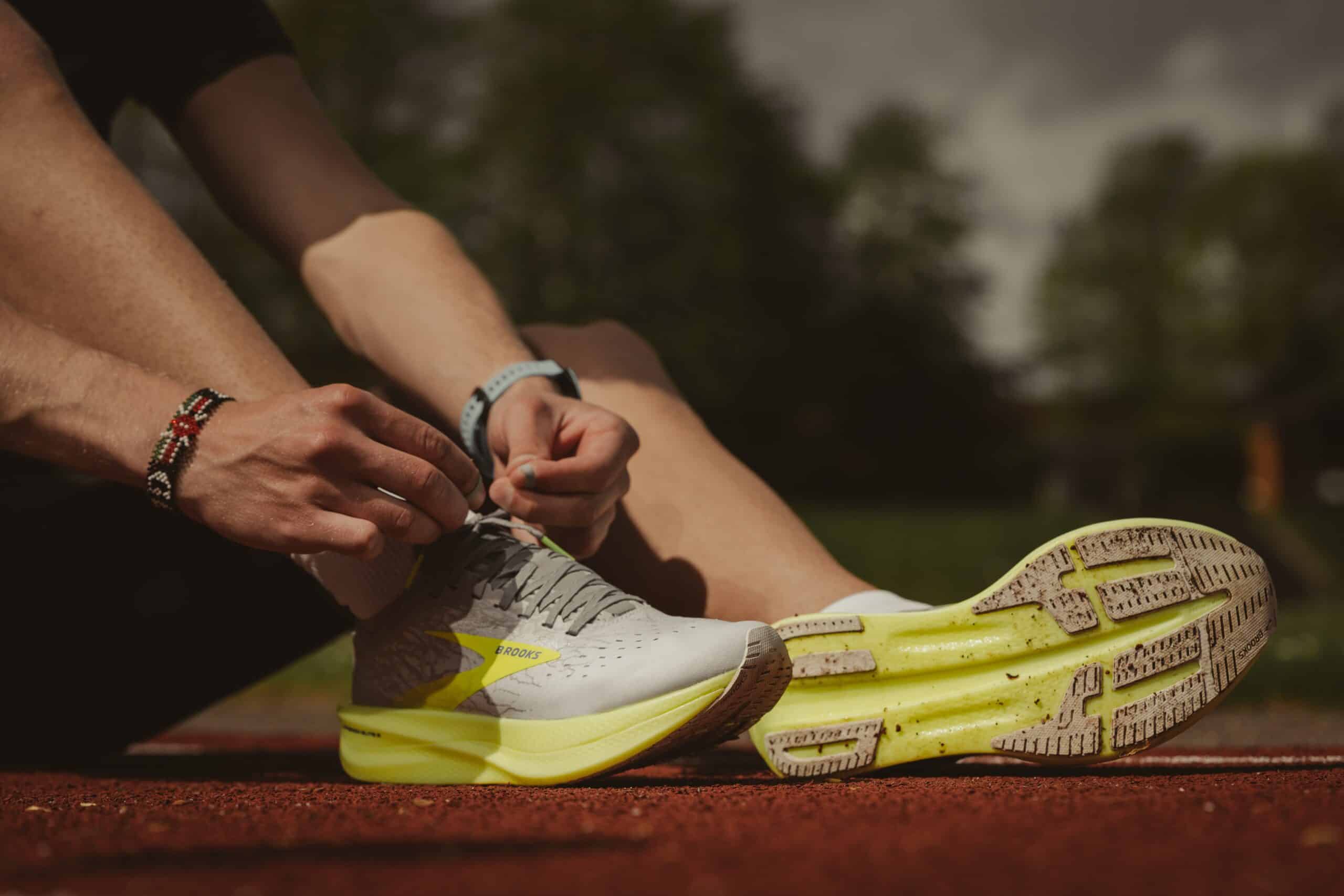If you are a runner, then you know that having the best neutral running shoes is important. Not all running shoes are created equal, and it is important to find the pair that is best suited for your individual needs.
In this blog post, we will take a look at 10 of the best neutral running shoes on the market right now.
We will rank them in terms of budget-friendliness, style, durability, and overall performance.
So whether you are looking for a new pair of running shoes for your next marathon, playing basketball with friends or just want a new pair of sneakers to wear everyday, we have you covered!
Let’s get a quick overview on our top 10:
- best for budget: Asics Gel Contend 7
- best for long distance: Hoka Mach 4
- best for short sprints: Saucony Kinvara 11
- best for trails: Sense Ride 4
- best for asphalt: Nike Pegasus 37
- best for rubber surfaces: Saucony Freedom ISO
- best for every day: Nike Revolution 5
- best with the longest durability: Adidas UltraBoost 22
- all-rounder: Asics Gel-Kayano 27
The Best Neutral Running Shoes For A Budget
Asics Gel Contend 7

The Asics Gel Contend is a great option for runners on a budget. This shoe is very affordable, yet still offers great durability and performance. The Contend is best suited for running on asphalt or rubber surfaces, and can also handle the occasional trail run. If you are looking for an everyday running shoe that won’t break the bank, the Asics Gel Contend is a great option!
- Price: $60
- Durability: Excellent
- Where to buy: Asics website or Amazon.com
Best for: Running on asphalt or rubber surfaces. Can also handle occasional trail running. Great for everyday use!
Best Neutral Running Shoes For Long Distance
Hoka Mach 4
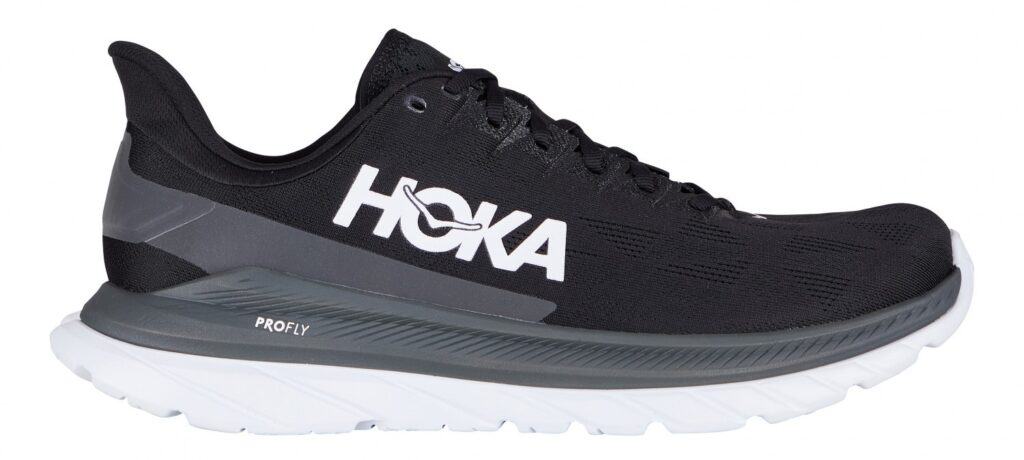
The Hoka Mach is a great option for runners looking for neutral shoes best suited for long distance running. This shoe provides excellent cushioning and support, making it ideal for running on asphalt or concrete surfaces. If you are training for a marathon or half-marathon, the Hoka Mach is a great option!
- Price: $140
- Durability: Excellent
- Where to buy: Hoka website or Amazon.com
Best for: Long distance running on asphalt or concrete surfaces. Also great for training runs!
Best Neutral Running Shoe For Short Sprints
Saucony Kinvara 11

The Saucony Kinvara is a great option for runners looking for a running shoes best suited for short sprints. This shoe is very lightweight and provides excellent traction, making it ideal for running on asphalt or concrete surfaces. If you are training for a race or just want a great pair of sneakers to wear everyday, the Saucony Kinvara is a great option!
- Price: $120
- Durability: Excellent
- Where to buy: Saucony website or Amazon.com
Best for: Short sprints on asphalt or concrete surfaces. Also great for training runs!
Best Neutral Trail Running Shoe
Sense Ride 4
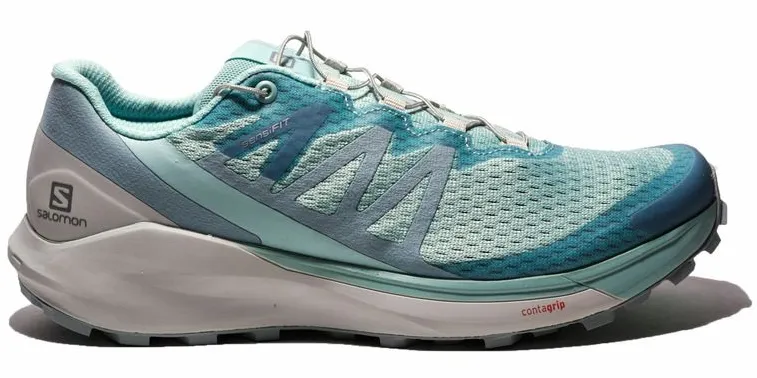
The Sense Ride is a great option for runners looking for a neutral trail running shoe. This shoe provides excellent cushioning and traction, making it ideal for running on trails or uneven surfaces. If you are looking for a versatile trail shoe that can handle any terrain, the Sense Ride is a great option!
- Price: $130
- Durability: Excellent
- Where to buy: Salomon website or Amazon.com
Best for: Running on trails or uneven surfaces. Also great for training runs!
Best Neutral Running Shoe For Asphalt
Nike Pegasus 37
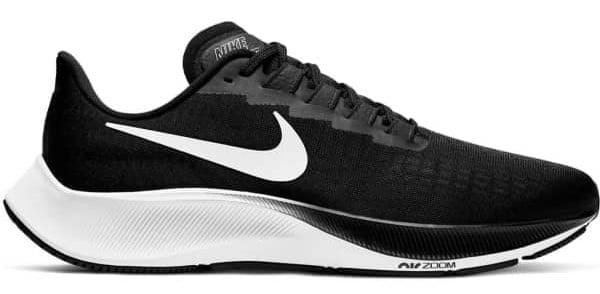
The Nike Pegasus is a great option for runners looking for neutral running shoes best suited for asphalt. This shoe provides excellent cushioning and support, making it ideal for running on asphalt or concrete surfaces. If you are training for a race or just want a great pair of sneakers to wear everyday, the Nike Pegasus is a great option!
- Price: $120
- Durability: Excellent
- Where to buy: Nike website or Amazon.com
Best for: Running on asphalt or concrete surfaces. Also great for training runs!
Best Neutral Running Shoe For Rubber Surfaces
Saucony Freedom ISO

The Saucony Freedom ISO is a great option for runners looking for neutral running shoes best suited for rubber surfaces. This shoe provides excellent traction and support, making it ideal for running on rubber or turf surfaces. If you are training for a race or just want a great pair of sneakers to wear everyday, the Saucony Freedom ISO is a great option!
- Price: $130
- Durability: Excellent
- Where to buy: Saucony website or Amazon.com
Best for: Running on rubber or turf surfaces. Also great for training runs!
Best Neutral Running Shoes For Everyday
Nike Revolution 5
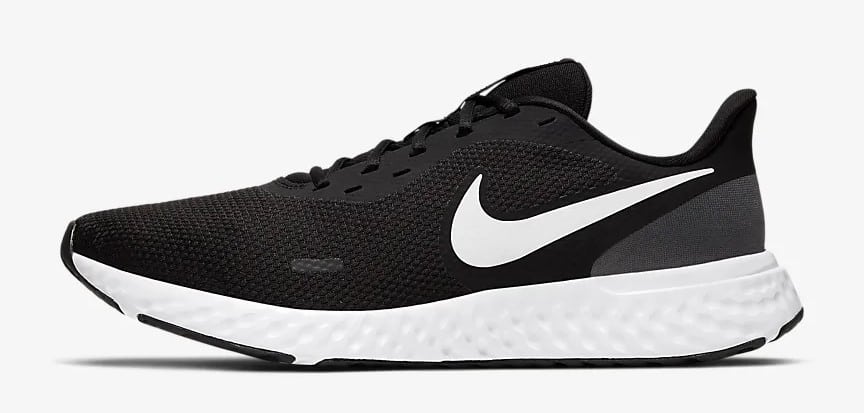
The Nike Revolution is a great option for runners looking for a neutral running shoe best suited for everyday use. This shoe is very lightweight and provides excellent cushioning, making it ideal for running on any surface. If you are looking for a versatile sneaker to wear everyday, the Nike Revolution is a great option!
- Price: $60
- Durability: Excellent
- Where to buy: Nike website or Amazon.com
Best for: Everyday use! Running on any surface. Also great for training runs!
Best Neutral Running Shoe With The Longest Durability
Adidas UltraBoost 22
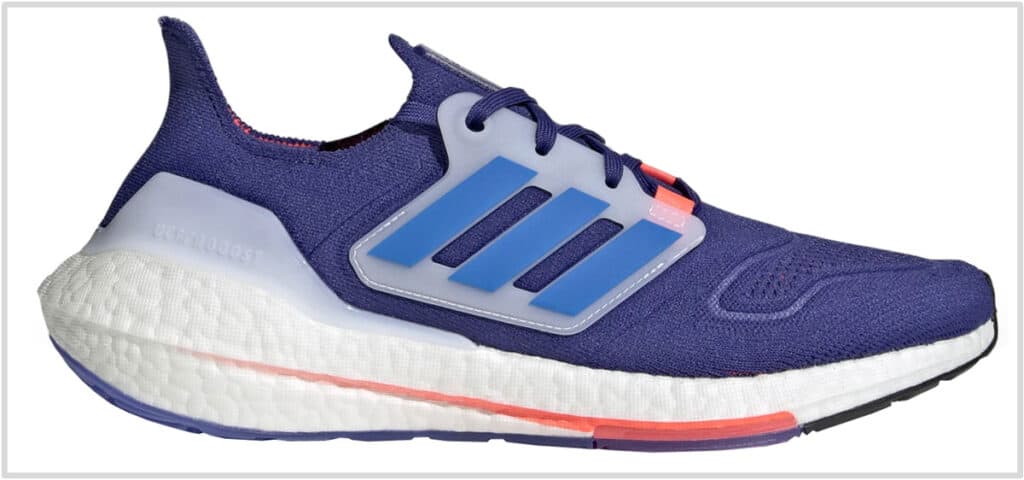
The Adidas UltraBoost is a great option for runners looking for an excellent shoe with the longest durability. This shoe provides excellent cushioning and support, making it ideal for running on any surface. If you are training for a race or just want a great pair of sneakers to last you awhile, the Adidas UltraBoost is a great option!
- Price: $180
- Durability: Excellent
- Where to buy: Adidas website or Amazon.com
Best for: Running on any surface. Also great for training runs
Best Neutral Running Shoe All-Rounder
Asics Gel-Kayano 27

The Asics Gel-Kayano is a great option for runners looking for the best neutral shoe all-rounder. This shoe provides excellent cushioning and support, making it ideal for running on any surface. If you are training for a race or just want a versatile pair of sneakers to use for any occasion, the Asics Gel-Kayano is a great option!
- Price: $160
- Durability: Excellent
- Where to buy: Asics website or Amazon.com
Best for: Running on any surface. Also great for training runs!
More Shoe Posts
Last Words
As you can see, there are a lot of great options when it comes to choosing the best neutral running shoes. No matter what your budget, style, or needs are, there is sure to be a perfect pair of shoes out there for you!
So get out there and start exploring all the different options available to find your perfect match!
Happy shopping! 🙂
Frequently Asked Questions
How Did We Choose The Running Shoes?
We tested every mentioned product to choose the best ones. We looked at multiple factors such as support, cushioning, durability, weight, and price.
We put each shoe through a rigorous testing process to see how it performed. Our team of experts ran on different surfaces and in different conditions to get a true sense of how each shoe performed.
How Often Should I Replace My Running Shoes?
It is generally recommended to replace your shoes every 300-500 miles. However, this number will vary depending on your individual needs.
If you notice that your shoes are starting to wear down or you are experiencing any pain or discomfort, it is probably time to replace them.
What Are The Different Types Of Running Shoes?
There are three main types of them: neutral, stability, and motion control. Neutral shoes provide no extra support and are best suited for runners with a normal gait.
Stability shoes provide extra support for runners with a pronated gait (when your foot rolls inward when you run).
Motion control shoes are best suited for runners with a supinated gait (when your foot rolls outward when you run).
Some also have a toe box, responsive ride, toe off or soft cushioning.
What Is The Difference Between Running Shoes And Training Shoes?
Running shoes are designed specifically for running and provide the support and cushioning that runners need. Training shoes are designed for a variety of activities and may not provide the same level of support and cushioning as running shoes.
Both running shoes and training shoes can be used for walking, but running shoes will provide more support and cushioning. If you only plan on using your sneakers for walking, a training shoe may be a better option.
What Is The Difference Between Running Shoes And Cross-Training Shoes?
Cross-training shoes are designed for activities such as weightlifting, basketball, and tennis. These shoes provide more support than running shoes but less cushioning.
If you participate in a variety of activities, a cross-training shoe may be a good option. However, if you only plan on using your sneakers for running, a running shoe is a better choice.
Do I Need To Wear Neutral Shoes If I’m Not Going To Be Running?
No, you don’t need to wear neutral shoes if you’re not going to be running. However, they will provide more support and cushioning than other types of sneakers.
If you’re participating in a low-impact activity such as walking or light jogging, a running shoe is a good choice. But if you’re doing something more intense, like basketball or tennis, you may want to consider a cross-training shoe or even a stability or motion control shoe.
How Do I Choose The Right Neutral Runners For Me?
There are a few things to keep in mind when choosing the right neutral shoes for you.
First, consider your foot type. If you have a high arch, you’ll need a different type of shoe than someone with a flat foot.
Second, think about the surface you’ll be running on. If you’re going to be running on pavement, you’ll need a different type of shoe than someone who plans on running on trails. Finally, consider your budget.
Neutral Running Shoe Category can range in price from $50 to $200.
Choose a shoe that fits both your needs and your budget.
What Is A Neutral Shoe?
A neutral shoe is a type of running shoe that provides no extra support or cushioning.
These shoes are best suited for runners with a normal gait and are ideal for use on pavement or other even surfaces.
What Are The Benefits Of Wearing Neutral Shoes?
There are several benefits to wearing these kinds of shoes.
First, they provide less support, which can lead to improved foot strength.
Second, they’re typically lighter weight than other types of shoes, which can improve speed and performance.
Finally, they’re generally more affordable than other types of shoes.
How Can I Tell If I Need A Stability Or Motion Control Shoe If I Have A Pronated Gait?
If you have a pronated gait, it means that your foot rolls inward when you run.
This can lead to problems such as plantar fasciitis and shin splints.
To correct this, you’ll need a shoe with extra support. A stability or motion control shoe is best for runners with a pronated gait.
How Can I Tell If I Need A Stability Or Motion Control Shoe If I Have A Supinated Gait?
If you have a supinated gait, it means that your foot rolls outward when you run.
This can lead to problems such as Achilles tendonitis and ankle sprains.
To remedy this, you’ll need a shoe with more support.
Runners with a supinated gait should use a stability or motion control shoe.
What Is A Toe Box?
The toe box is the part of the shoe that covers your toes.
It’s important to choose a shoe with a toe box that is wide enough to accommodate your foot.
If the toe box is too narrow, it can cause problems such as black toenails and blisters.
What Is A Heel Counter?
The heel counter is the part of the shoe that covers your heel.
It’s important to choose a shoe with a heel counter that is firm enough to provide support, but not so rigid that it rubs and causes irritation.
What Is The Midsole?
The midsole is the layer of cushioning between the outsole and insole of the shoe.
It’s important to choose a shoe with a midsole that is soft enough to provide cushioning but not so soft that it doesn’t provide support.
What Are The Different Types Of Outsoles?
There are three different types of outsoles: solid rubber, blown rubber, and carbon rubber.
Solid rubber outsoles are the most durable but also the heaviest.
Blown rubber outsoles are lighter weight but not as durable.
Carbon rubber outsoles are lightweight and provide good traction but don’t last as long as other types of outsoles.
What Are The Different Types Of Insoles?
There are three different types of insoles: gel, foam, and air. Gel insoles are the most cushioned but also the heaviest.
Foam insoles are lighter weight but don’t provide as much cushioning.
Air insoles are lightweight and provide good support but don’t last as long as other types of insoles.

